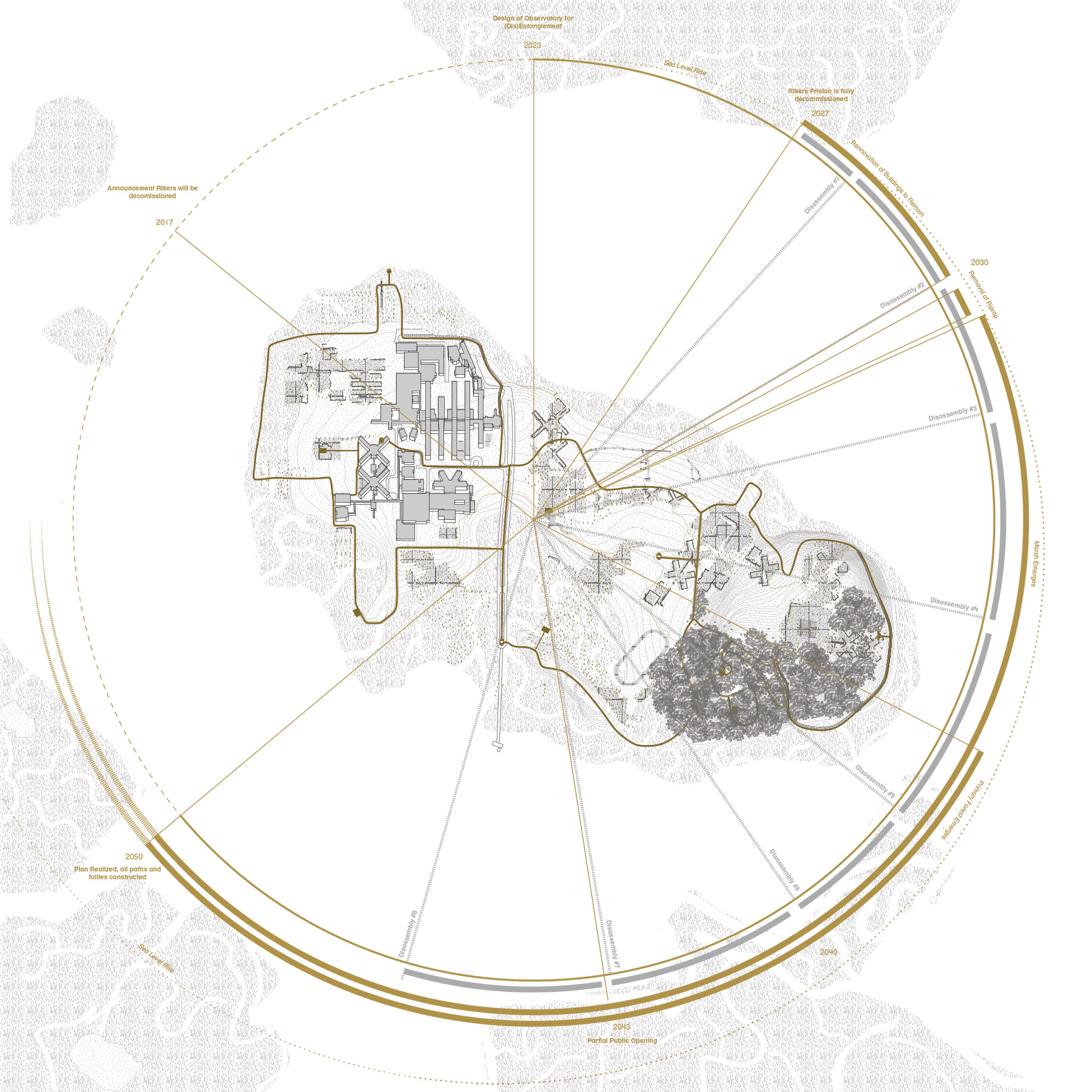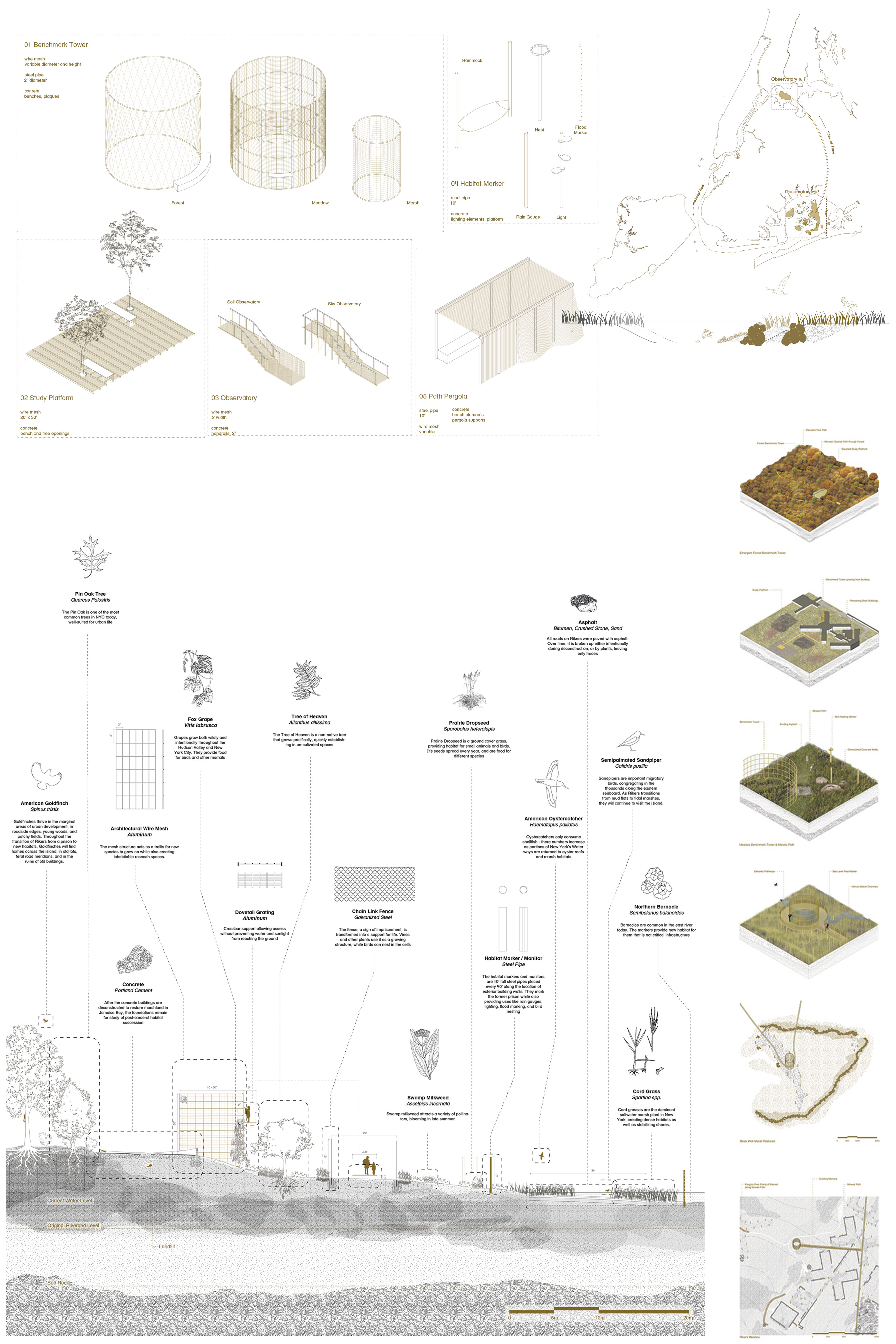observatory for [dis]entanglement
Harvard Graduate School of Design
New York, New York
Prof. Francesco Garofalo
Fall 2023
What emerges in damaged landscapes, after a vision of an ideal society fails? What new modes of relations, of knowledge generation, of habitats and homes grow from the ruins of the carceral state? The Observatory for
(Dis)Entanglement offers a speculative plan for New York City that invites researchers and visitors alike to observe habitat formation through repeated encounters and new forms of knowledge production through a more-than-human learning process.

migration observation

benchmark tower recording

rikers island, 2050

jamaica bay, 2050
As Rikers Prison is deconstructed, the concrete and brick rubble flow to Jamaica Bay, where they are repurposed to support life rather than destroy it. Concrete forms artificial reefs that protect the rapidly-depleting marshes of the bay. As the reefs expand, they become a second site for the Observatory for (Dis)Entanglement that expands over time. Anthropogenic materials are not separated and removed from the landscape - rather, the ODE understands that there is no remediation, no return to a pristine condition. The ‘natural’ and the ‘human’ are intertwined.
The plan is a circuit garden taking visitors and researchers through the changing landscapes of Rikers Island and Jamaica Bay. The ruins of the prison become a base upon which different species establish and create new worlds, new future way of being in New York. At the observatories at Rikers are built, the marshes at Jamaica bay are strengthened, becoming a second site for the ODE. Research and observation follies and paths are constructed, again offering new ways of studying the bay. New migrating species arrive, finding temporary, or even permanent homes, as climate changes shift habitat. While the plan is imagined to be realized by 2050, ODE will continue to observe changes far into the future. Habitats are historical phenomena, emerging in relation to what was exsiting. By studying these phenomena of succession, worlding, and new encounters, ODE is a new way to understand the city, tangling and untangling its histories and futures.
The plan is a circuit garden taking visitors and researchers through the changing landscapes of Rikers Island and Jamaica Bay. The ruins of the prison become a base upon which different species establish and create new worlds, new future way of being in New York. At the observatories at Rikers are built, the marshes at Jamaica bay are strengthened, becoming a second site for the ODE. Research and observation follies and paths are constructed, again offering new ways of studying the bay. New migrating species arrive, finding temporary, or even permanent homes, as climate changes shift habitat. While the plan is imagined to be realized by 2050, ODE will continue to observe changes far into the future. Habitats are historical phenomena, emerging in relation to what was exsiting. By studying these phenomena of succession, worlding, and new encounters, ODE is a new way to understand the city, tangling and untangling its histories and futures.
